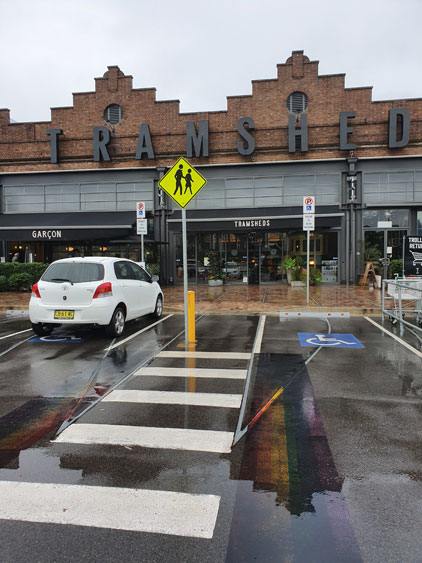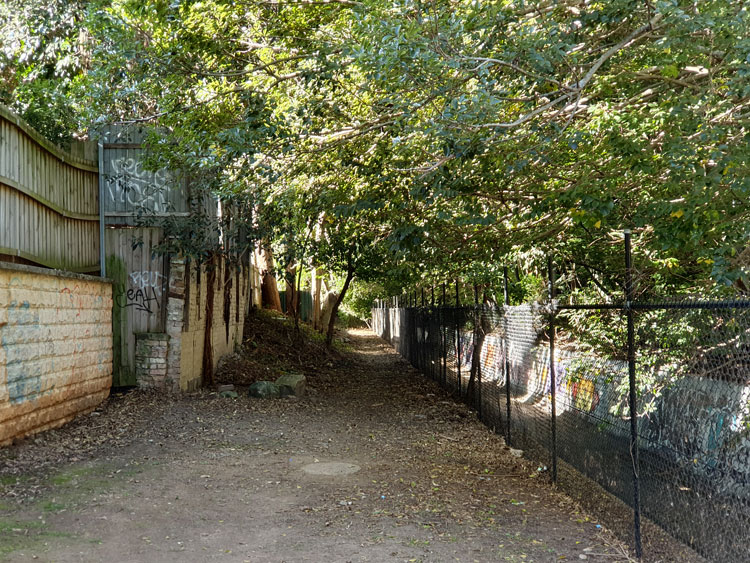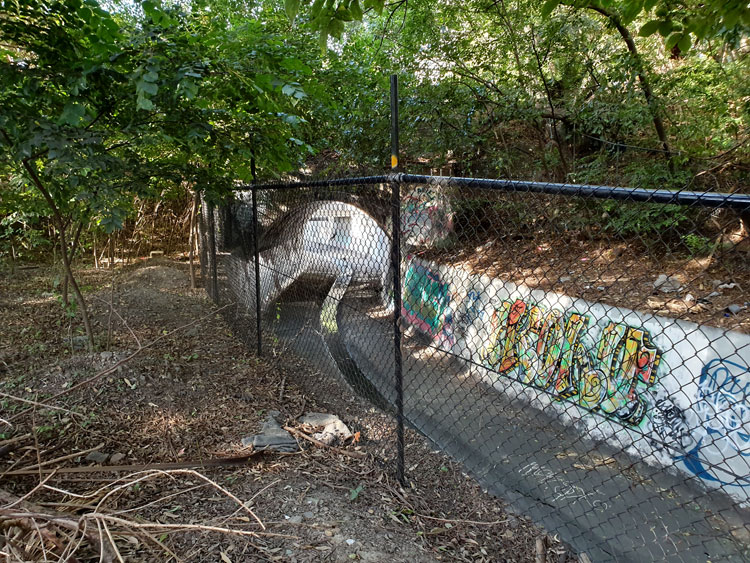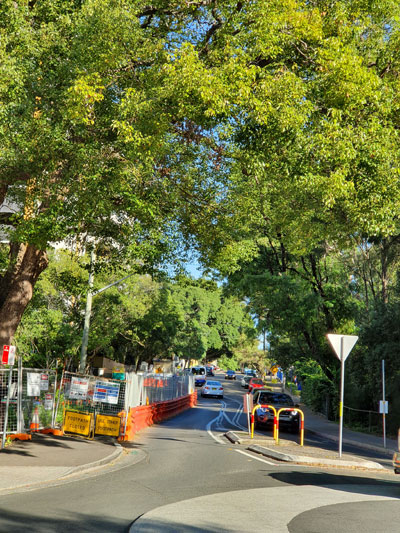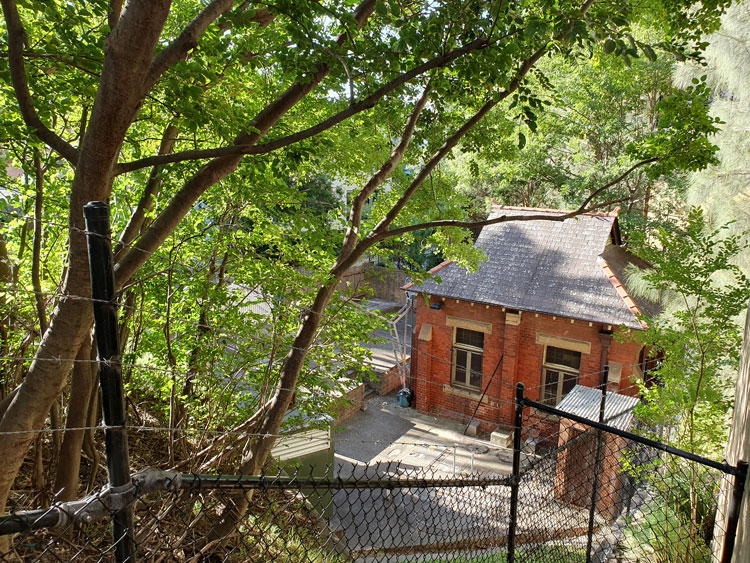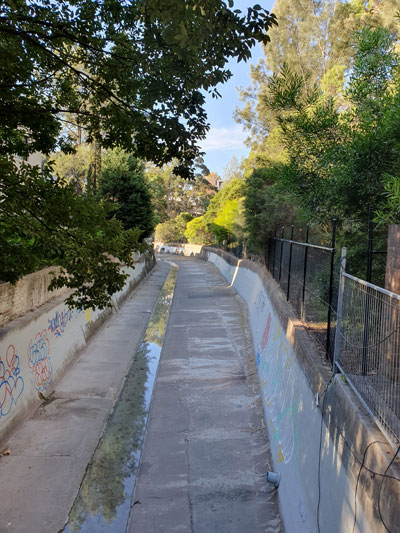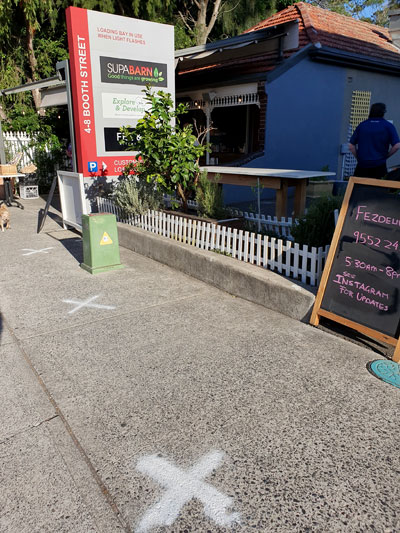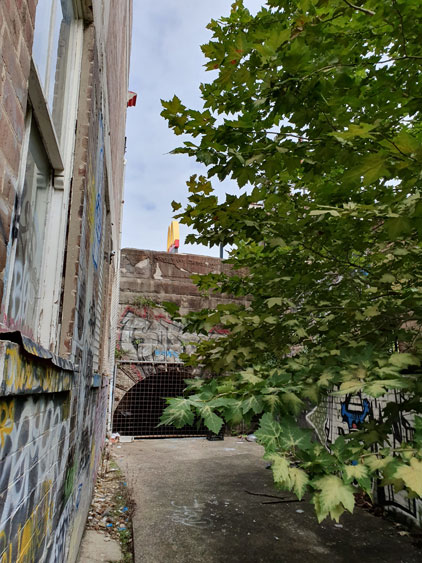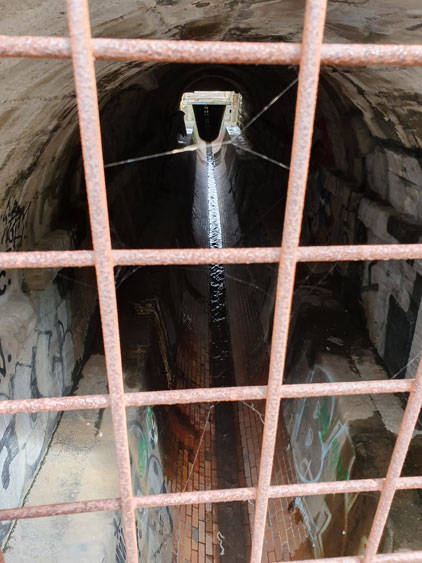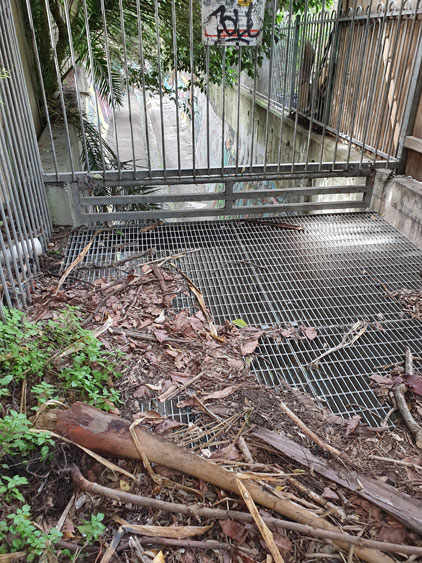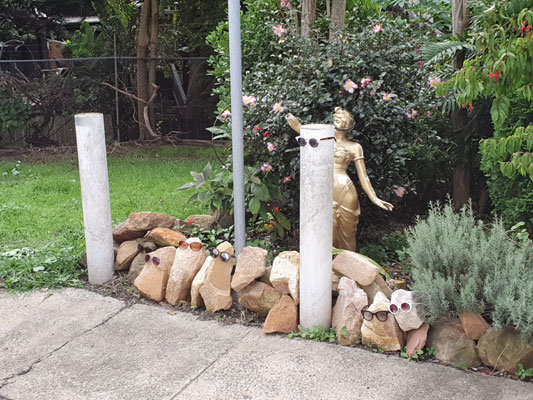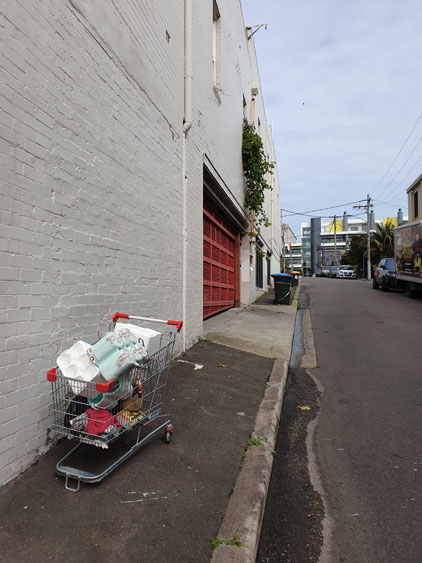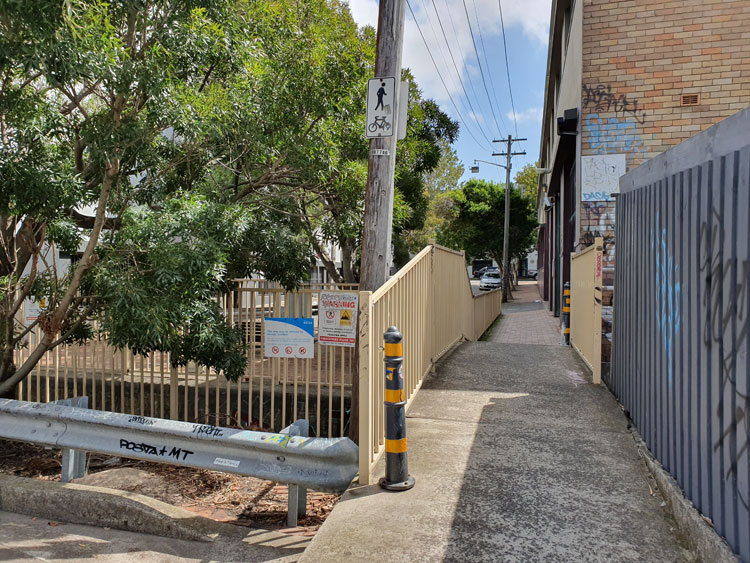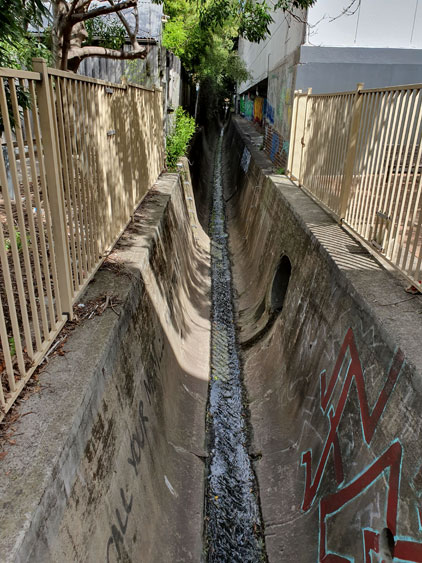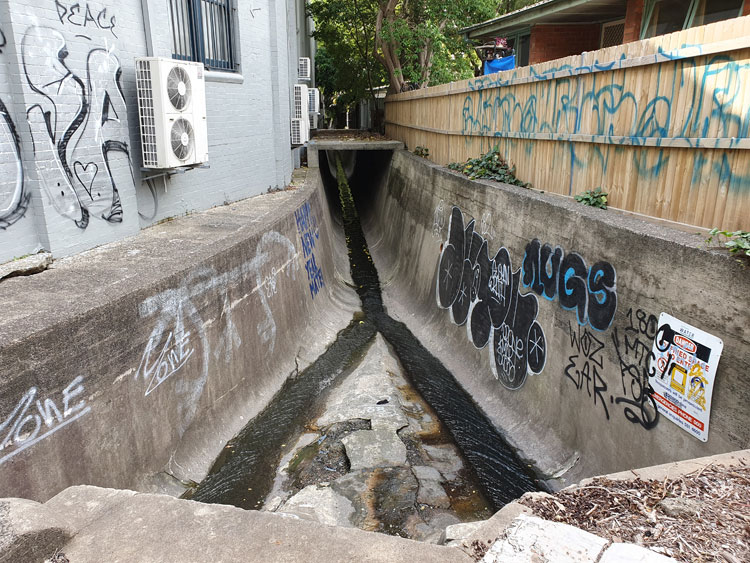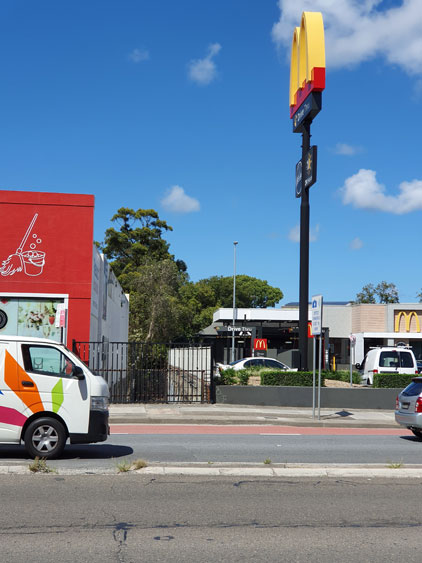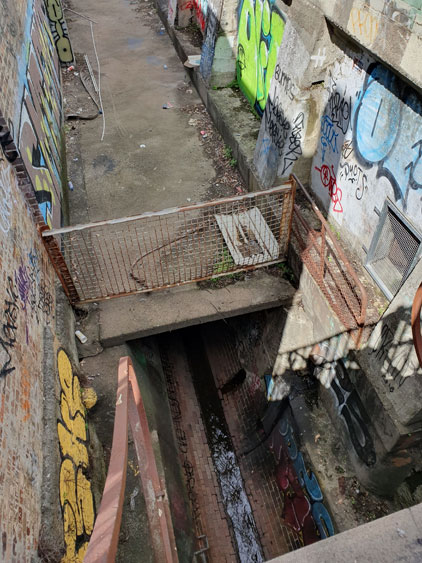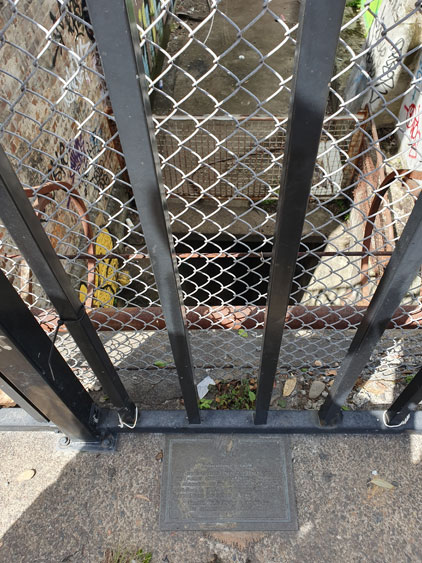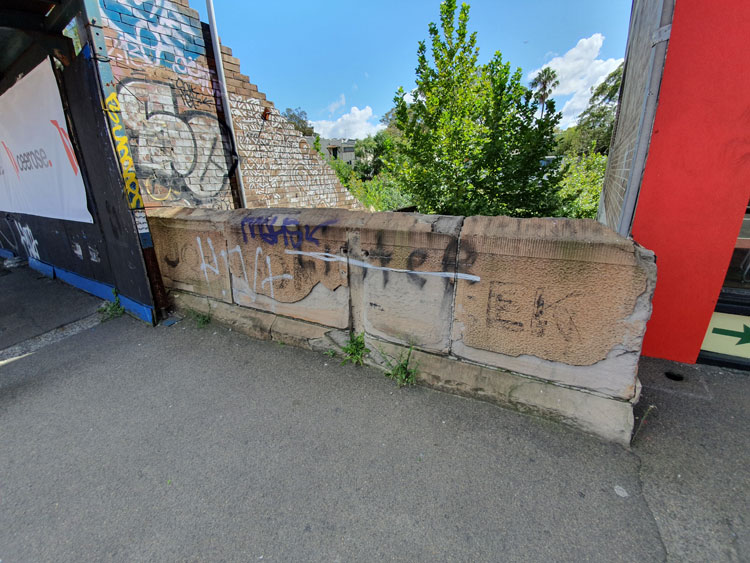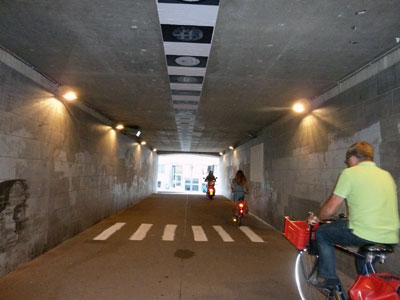Wednesday 10 June 2020
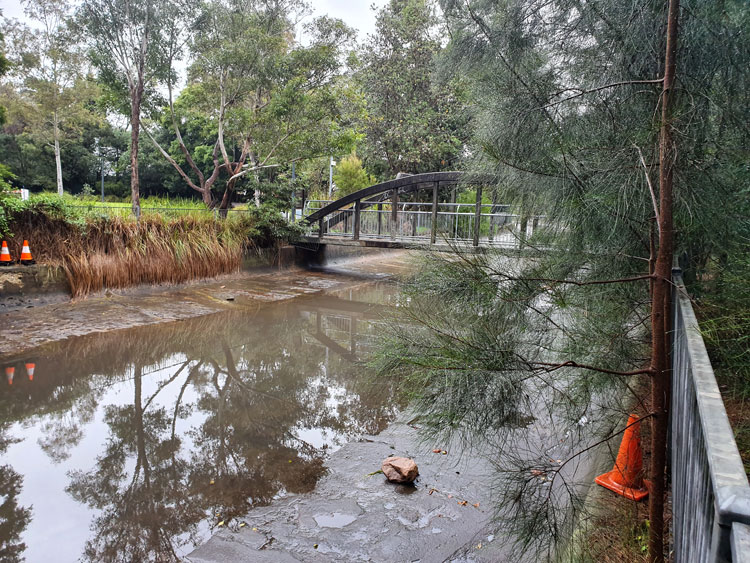
At the northern end of Smith & Spindler Park in Annandale there is a quaint arched footbridge across to AV Henry Reserve. After passing beneath this footbridge Johnstons Creek flows under a road bridge where vehicles swoop around the arc of The Crescent. The canalside pathway has a separate underpass below the road. I have chosen to follow this section of the canal on a rainy weekday in the hope of avoiding encounters with speeding cyclists on the shared path. I am the kind of pedestrian they hate – slow, meandering, crossing unpredictably from one side of the path to the other to take photographs.
The Man Who Walks Ahead drops me at Smith & Spindler Park and will this time drive ahead to meet me at Tramsheds. Before I set off I am drawn to a cluster of small brick building in the corner of the park. It is another Sewage Pumping Station, SPS 4. I am surprised to find the high chain wire gate ajar and I walk right into the compound, as have many graffitists before me. There is an outdoor dunny attached to the main building and inevitable jokes spring to mind. Is it connected to the sewer, I wonder. When I tell him about it later The Man suggests it might house a relief valve.
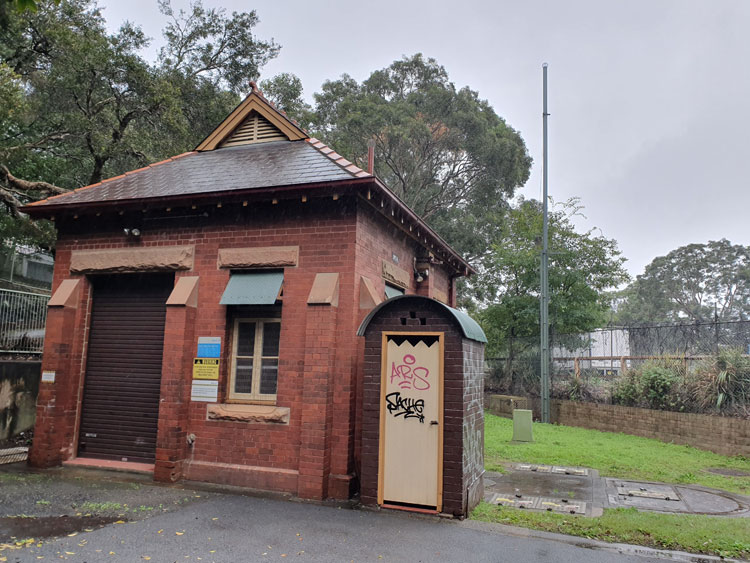
There is a steep dip in the claustrophobic tunnel under The Crescent. A friend later tells me that when she used to cycle home from Glebe she would have to take a long detour whenever Johnstons Creek flooded because the water in the underpass was too deep to ride through.
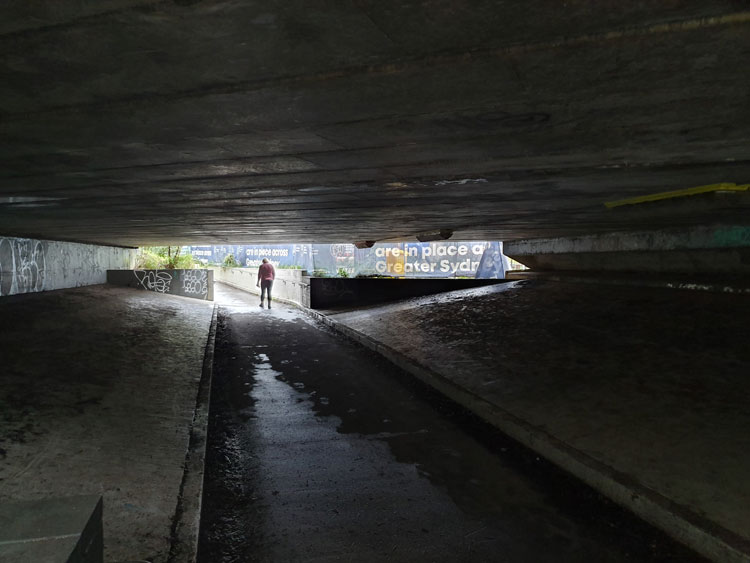
When I emerge I’m disappointed to find the creek blocked from view by safety fencing and Sydney Water banners. ‘Johnstons Creek naturalisation’, they read, ‘We’re improving the health of this waterway, creating a better place for the community to enjoy’. I peer through a gap in the screens and conclude that things have got a lot worse before getting better. It was in this stretch of the canal that a confused bull shark, said to be 1.8 metres long, was stranded in a pool when the tide went out one day in September 2009. Happily it escaped back to Rozelle Bay when the tide came in.
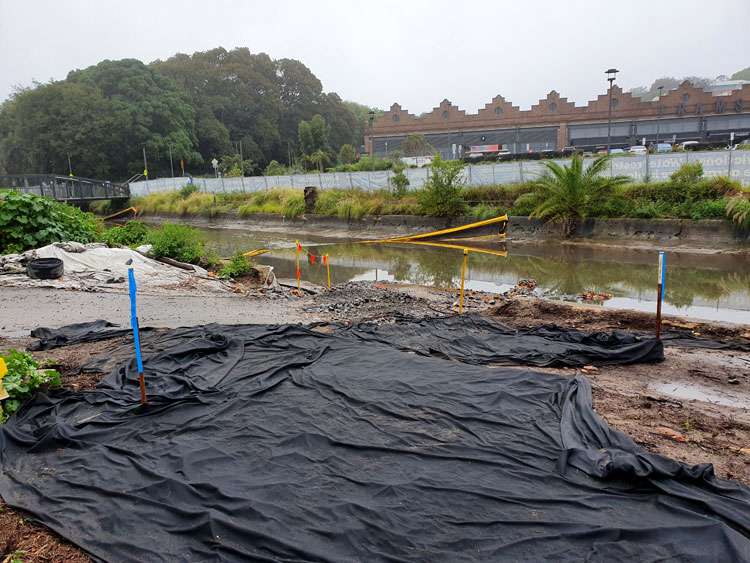
I am now in Federal Park. Larger than all the other parks and reserves that edge the western side of Johnstons Creek, narrow Federal Park runs all the way from here to the bay. At a place where two separate bridges cross the canal (one for vehicles, one for pedestrians) two men in high-vis jackets are earnestly discussing ground water and surface water. Beyond them I can see the rail viaduct.
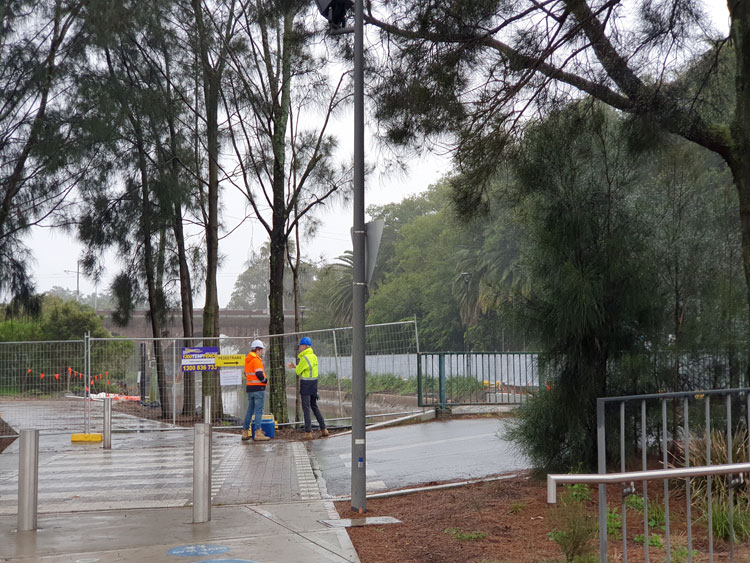
When I walk under the viaduct I will have completed the whole length of Johnstons Creek proper. But that walk must wait for another day. Right now The Man is waiting in the carpark of Tramsheds, where the former Rozelle Tram Depot has been transformed into an eating emporium. Erected in 1904 and preserved by repurposing, the depot was one of several imposing infrastructure projects built near Johnstons Creek around that time including, of course, the canal itself.
If there aren’t too many people we will be allowed to sit at a café for a cup of coffee rather than having to buy takeaway. It’s still raining but a rainbow has come out.
